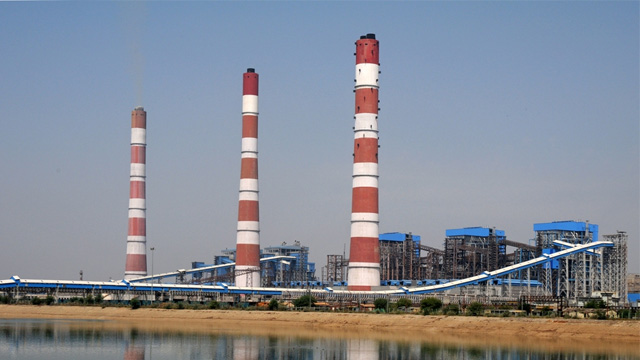Prime Minister Manmohan Singh will dedicate to the nation Thursday the state-run NTPC’s 2,980 MW Sipat Super Thermal Power Station in Chhattisgarh.
Prime Minister Manmohan Singh will dedicate to the nation on Thursday the state-run NTPC’s 2,980 MW Sipat Super Thermal Power Station in Chhattisgarh.
The National Thermal Power Corp project is located in Bilaspur district, about 130 km from Raipur.
The foundation stone of the 1,600 MW Stage-I of NTPC-Lara Super Thermal Power Project in Lara village in Raigarh district will also be laid by the prime minister Thursday.
The project will have two units of 800 MW in Stage I and an ultimate installed capacity of 4,000 MW.
“NTPC Sipat will ensure power supply to Chhattisgarh, Madhya Pradesh, Maharashtra, Gujarat, Goa, Daman and Diu as also Dadra and Nagar Haveli,” a power ministry statement in New Delhi said.
The total installed capacity of NTPC is over 41,000 MW of which coal-based thermal power generation contributes nearly 32,000 MW.
Chhattisgarh Governor Shekhar Dutt, Chief Minister Raman Singh and Union Minister of State for Power Jyotiraditya Scindia are among those expected to attend the event.
A part of NTPC’s Western Region II, NTPC Sipat will ensure 2,980 MW of electricity from power-surplus Chhattisgarh.
The super critical Sipat station has three 660 MW environment friendly units having higher operating efficiency, which is one of the firsts among the glorious chapters of NTPC’s service to the nation.
The project has the distinction of having a large 765 KV switchyard for power evacuation — which is a first in the country.
NTPC sources coal from Korba’s Dipka extension mines of South Eastern Coalfields Ltd for the Sipat project.
The fuel is transported through NTPC’s own merry-go-round rail transportation system.
The water for the plant is sourced through a 16-km pipeline from the right bank of Hasdeo barrage canal, from Hardivishal village.
NTPC-Sipat project has been set up in nascent vegetation.
With a view to conserving the environment, the project has 275 meter high chimneys and higher efficiency static precipitators (ESPs).
A 50-meter Green Belt is being developed around the projects. Saplings have been planted in nearby villages, on both sides of the state highway, and on the approach roads.
For all construction activities, only ash bricks are used. The reuse of treated effluent for maintaining zero discharge has been put in place.
The ash ponds have been designed to ensure water cover to avoid fugitive dust. The ash water recirculation system has also been put into places to reuse the water and reduce water consumption.
As per a MoU of July 2009, Chhattisgarh will get 50 percent of the generated power. The rest will be shared by other states: Madhya Pradesh, Maharashtra, Gujarat, Goa, Daman and Diu and Dadar and Nagar Haveli.
IANS





